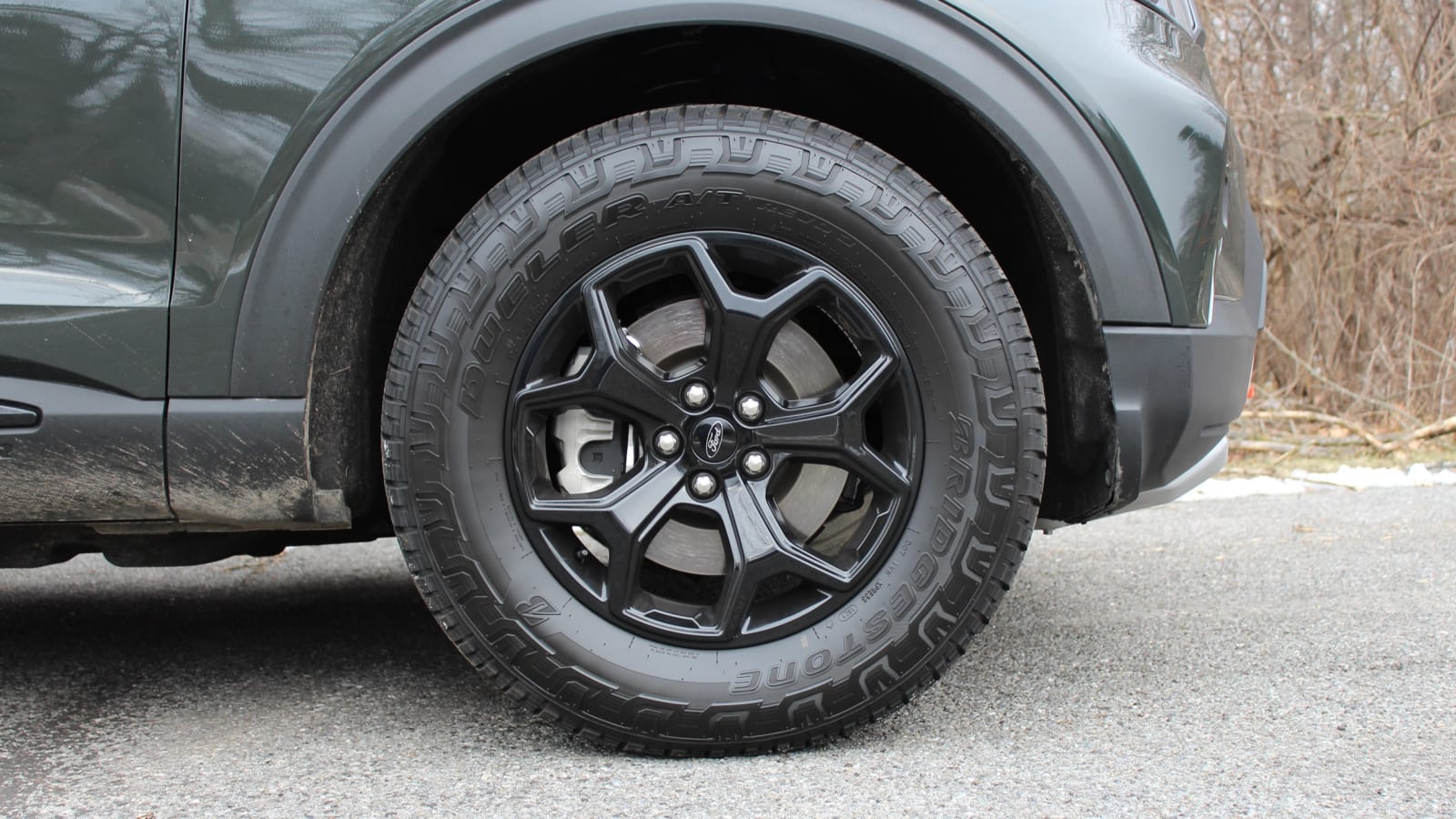ANN ARBOR, Mich. — The Ford Explorer isn’t the most exciting product in Ford’s lineup — a road-going, three-row SUV with styling that tastefully straddles the line between sporty and rugged. There’s an Explorer ST that helps connect the drive experience to the sporty part of that look, but until now, the Explorer’s off-road capability has been middling at best, especially straight from the factory. Perhaps that shouldn’t be surprising considering Ford now offers the Bronco to satisfy adventurous customers, but it does so at the sacrifice of on-road refinement and overall comfort. A gap in Ford’s SUV portfolio still exists then. Enter the 2022 Ford Explorer Timberline variant.
On paper, the Timberline’s unique features, included in our 2021 tester’s $47,260 base MSRP with destination (though that price increases to $47,540 for the 2022 model year), are enough to inspire more confidence. This isn’t just an appearance package. It rolls on big Bridgestone Dueler P265/65R-18 all-terrain tires. Its rides 0.8 inches higher, with a sufficiently lofty 8.7 inches of ground clearance, a 23.5-degree approach angle (a 2.5-degree improvement) and 23.7-degree departure angle (up by 1.7 degrees). The Timberline gets an off-road suspension that uses a retuned version of the Ford Police Interceptor’s dampers, plus revised springs — including a front rebound spring — stabilizer bars and steering rack. A Torsen limited-slip rear differential helps improve traction in loose or slippery surfaces. Mechanicals are protected by steel skid plates spanning the underbody from front to rear.
Under the hood is Ford’s hardworking 2.3-liter turbocharged EcoBoost inline-four sending 300 horsepower and 310 pound-feet of torque to the standard all-wheel drive . Some may lament the lack of a V6 option in the Timberline, craving the 400 horsepower and 415 pound-feet of torque available from the Explorer ST’s 3.0-liter EcoBoost. Routed through the 10-speed transmission, though, the 2.3-liter is able to make do with its 300 ponies just fine, with the gearbox choosing the right gear to never leave it feeling at a loss for motive force. In fact, we quite enjoyed putting the Timberline into Sport mode and enjoying the surprisingly stirring song of the engine as it climbed the rev ladder. It’s not enough to pull your glasses off your head, but it’s plenty of punch to make a move into heavy traffic or merge at a comfortably quick speed from even a shortish highway onramp.
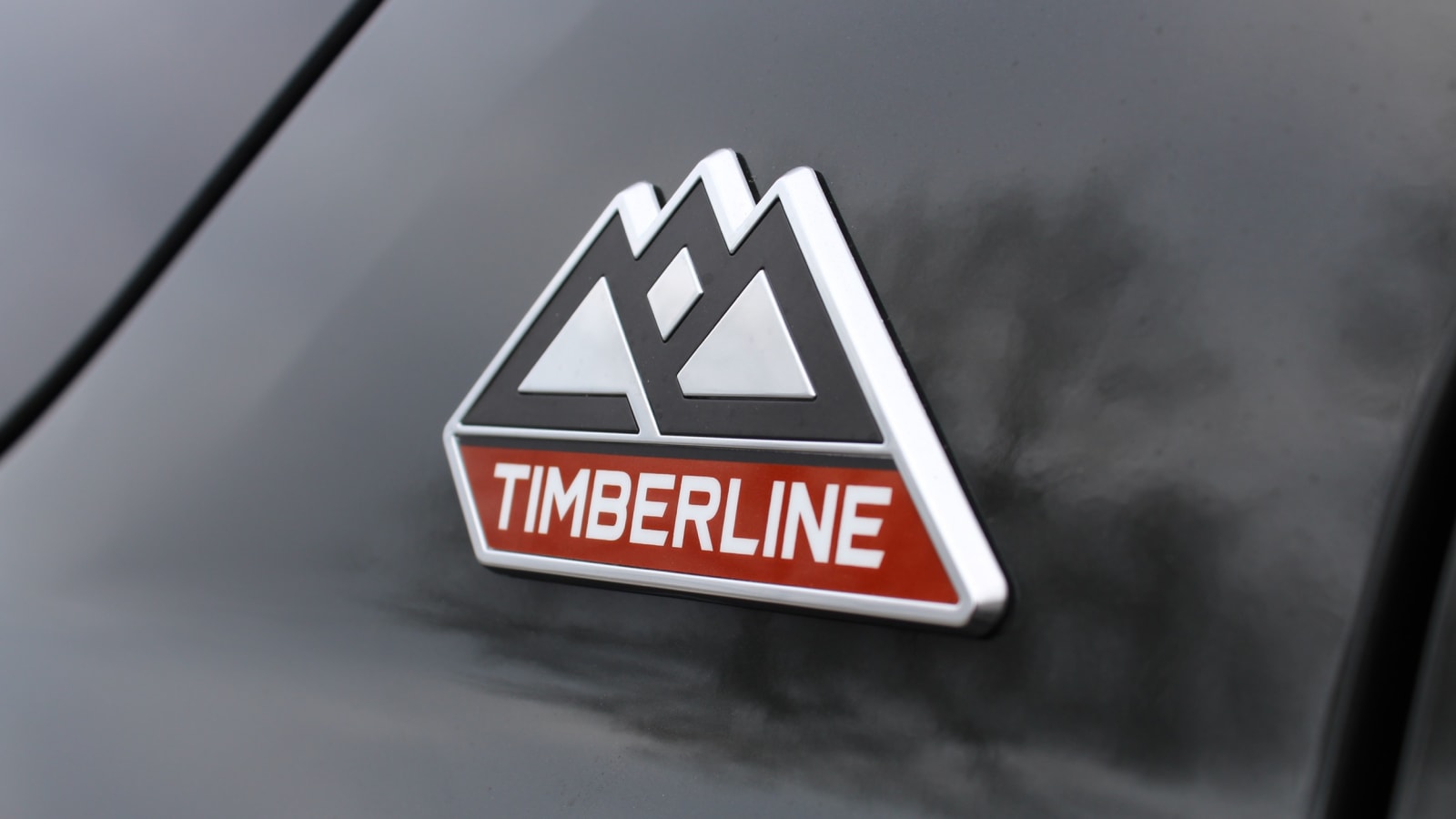
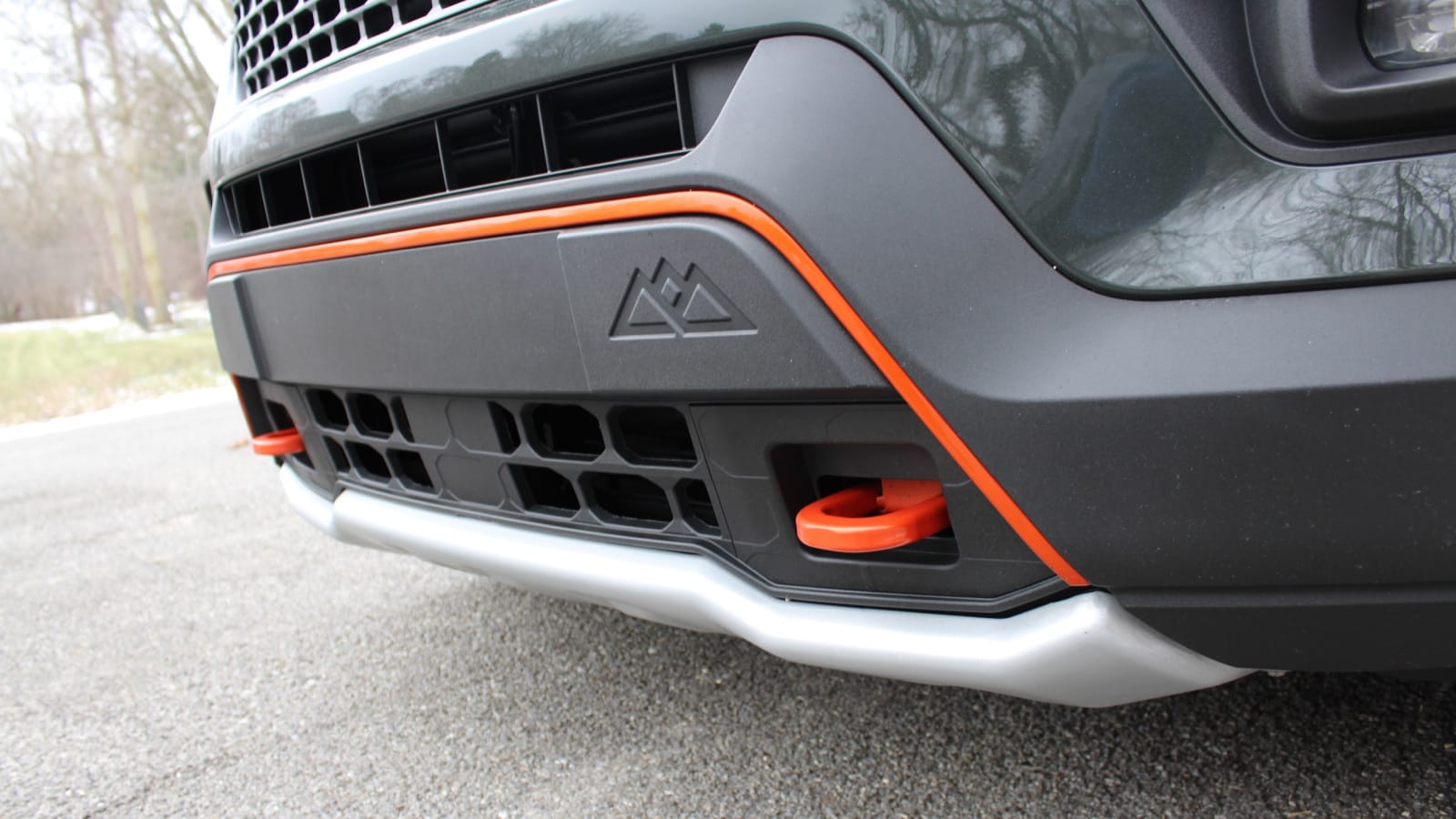
Beware, though: the Timberline’s fuel economy suffers compared to other Explorers equipped with the 2.3. The Timberline is rated at 19 mpg city, 22 mpg highway and 21 mpg combined, versus 20/27/23 for the Explorer XLT AWD. We weren’t exactly being miserly with the accelerator, and we hovered right around a 17-mpg average over the course of our week in the Timberline.
The Terrain Management System offers seven drive modes, including Trail and Deep Snow/Sand modes for when you do find yourself off the beaten path. Hill descent control is standard, and a 360-degree camera suite includes a front camera that can give you a glimpse of the trail ahead when your windshield is pointed at the sky. You can haul toys along on your journey, as the Timberline is capable of towing up to 5,300 pounds (more than the typical three-row SUV, but short of a Grand Cherokee L), and comes with a Class III towing package as standard equipment.
The Timberline looks the business, too. In addition to its increased ride height and high-sidewall all-terrains wrapped around dark, high-gloss 18-inch wheels, it gets conspicuous Ember Red tow hooks (a color that’s repeated on the front bumper surround), LED fog lights, black roof rack side rails and a unique dark gray grille. There are cool Timberline badges on the C-pillars and liftgate, plus a similar emblem on the wheels and front bumper. Our tester also came with the theme-appropriate Forged Green Metallic exterior paint, which brings to mind the looming feeling of a pine forest at twilight. In such a forest, the optional, dealer-installed Ford Performance auxiliary off-road lights in the grille — for which the Timberline comes pre-wired — could make a difference. They also give the front end a whiff of unmarked-police-vehicle, so if you’re wondering why the guy in front of you is going so slow …
Inside, the Timberline gets an exclusive Deep Cypress hue that complements that moody green exterior paint well. The ActiveX faux leather seats feature attractive heathered cloth inserts, and those up front get the Timberline logo embossed on their seatbacks. Heated front and second-row seats come standard, as does a heated, leather-wrapped steering wheel — all welcome additions for our wintry week in the Timberline. Seats, door panels and armrests have nice, not-too-bright Deep Tangerine stitching that adds to the sense of style and interior quality. The Stone Mesh plastic trim on the dash is a little questionable, but it’s used sparingly and squares with the look of cloth on the seats. Rubber floor mats come standard, to make for easy cleanup when you inevitably track dirt and snow into the vehicle. One thing we’d like to see in a woodsy ute like this would be 120-volt outlets (in addition to the standard 12-volt and USB outlets) to better power tools, gadgets and appliances during outdoor adventures or football tailgate.
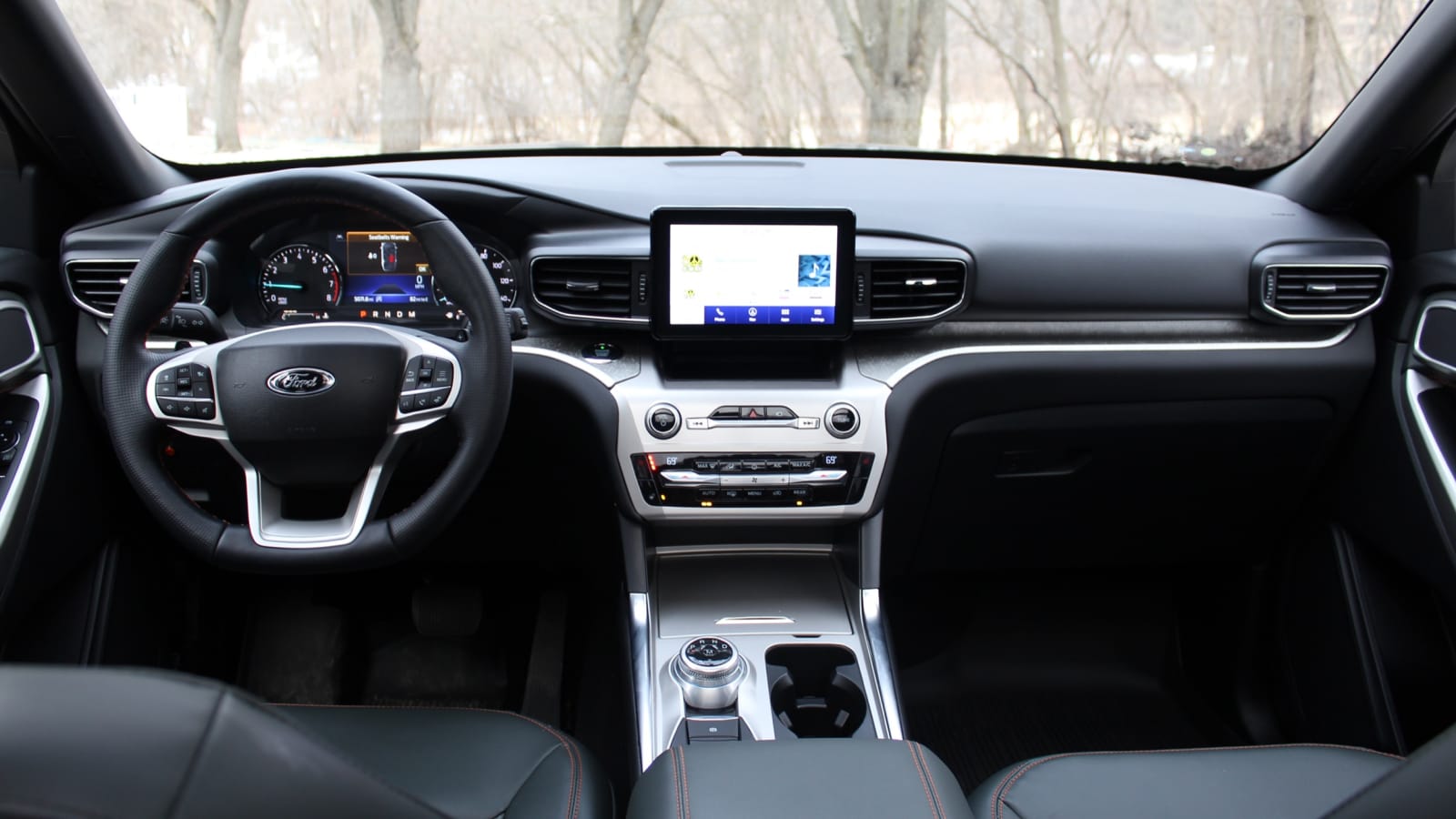
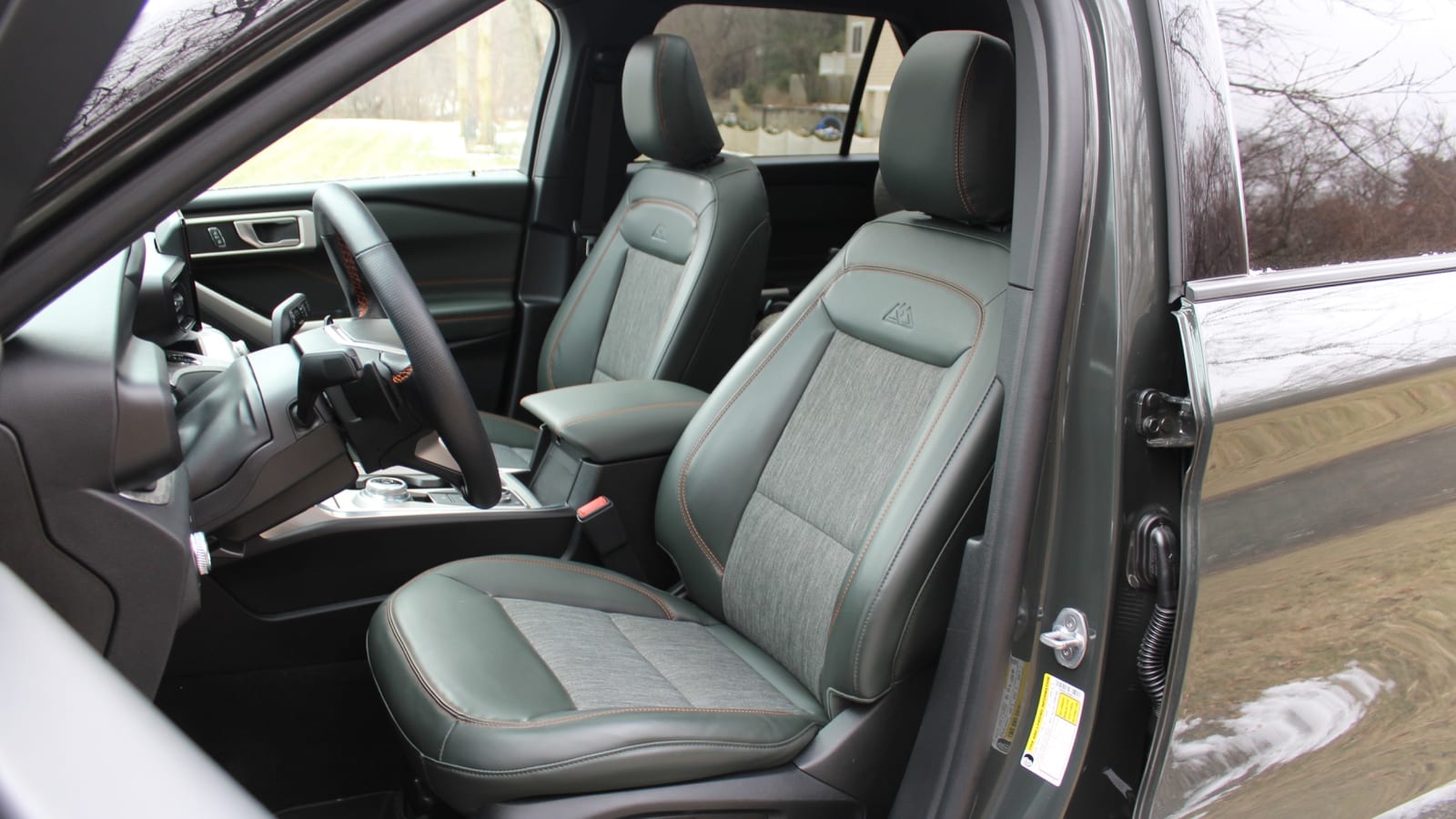
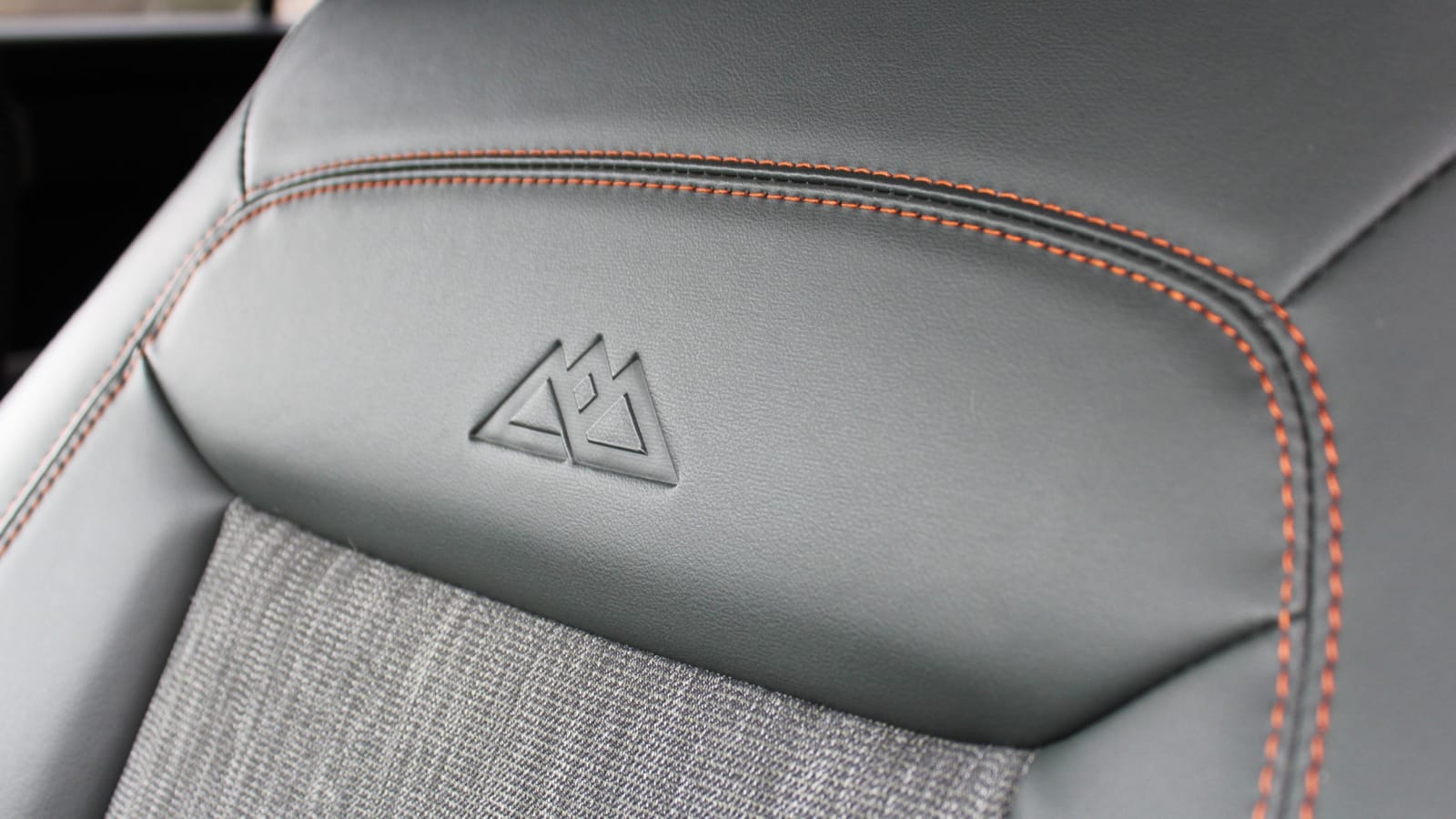
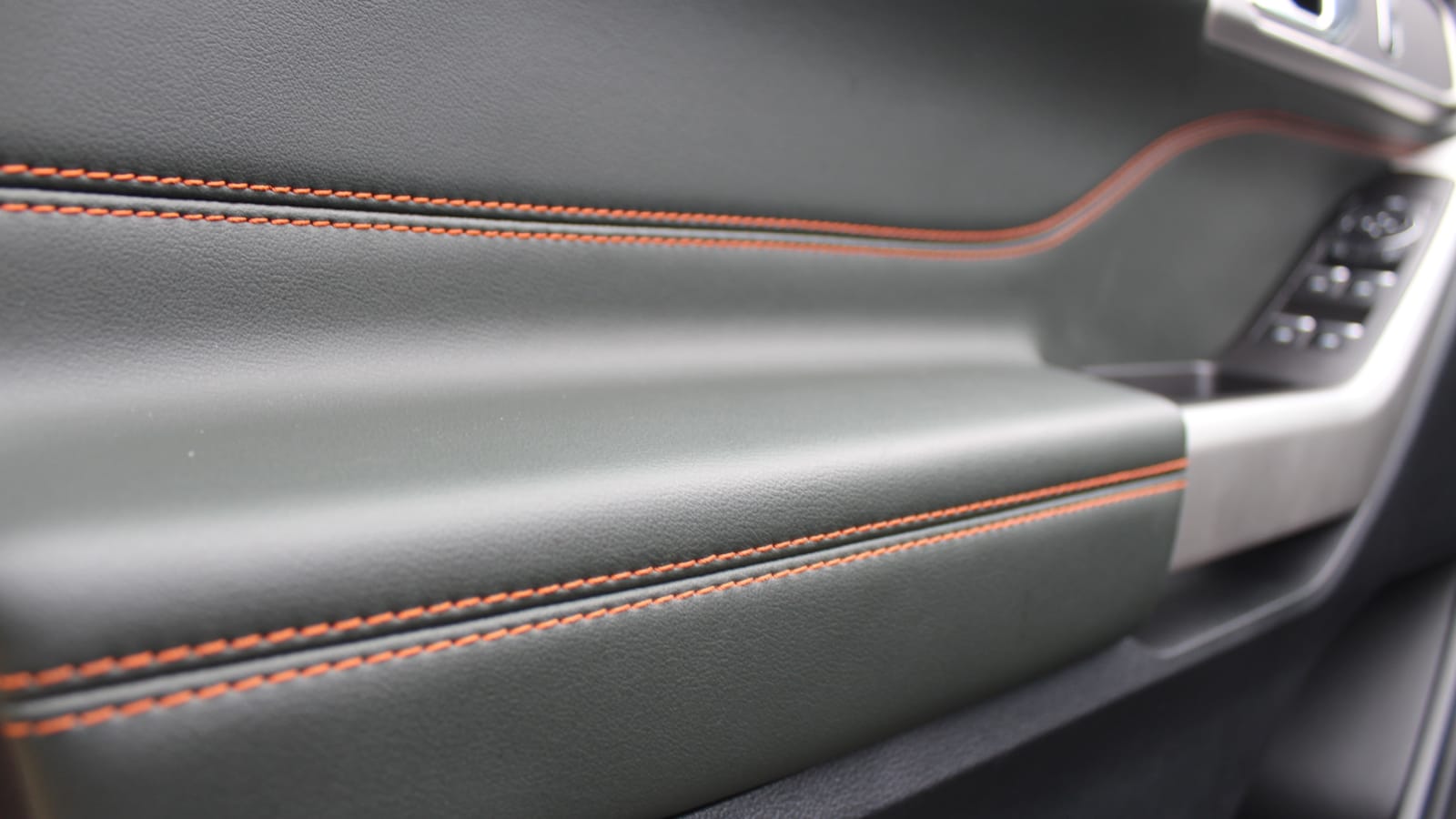
Looking at this Explorer, one might be concerned that its ruggedness would mean a sacrifice in comfort, but we were pleasantly surprised that this is not the case. The Timberline, with its big tires and off-road suspension, was perfectly agreeable driving around town and on undulating highway surfaces. It was free from squat and dive, with controlled body roll but still enough forgiveness through the suspension that our ski equipment didn’t clatter around in the back of the vehicle and our groceries weren’t tossed around the cargo hold. We expected a lot of noise considering the tread on the all-terrain tires, but those sounds and vibrations were largely absent from the cabin, allowing us to enjoy the music, some conversation between rows of seating, and occasionally just the tuneful sound of the motor.
Venturing off the pavement and onto the snow-covered, potholed dirt and gravel roads that surround the fringes of Ann Arbor, the Timberline felt right at home. The suspension remained well-sorted as we high-tailed it over hill and dale flanked by empty farm fields and icy woods. Furthermore, the steering was much lower-effort and more precise than you’d get in the admittedly more off-road-capable Bronco. Basically, mission accomplished: the Timberline balances its increased capability with its comfortable on-road demeanor.
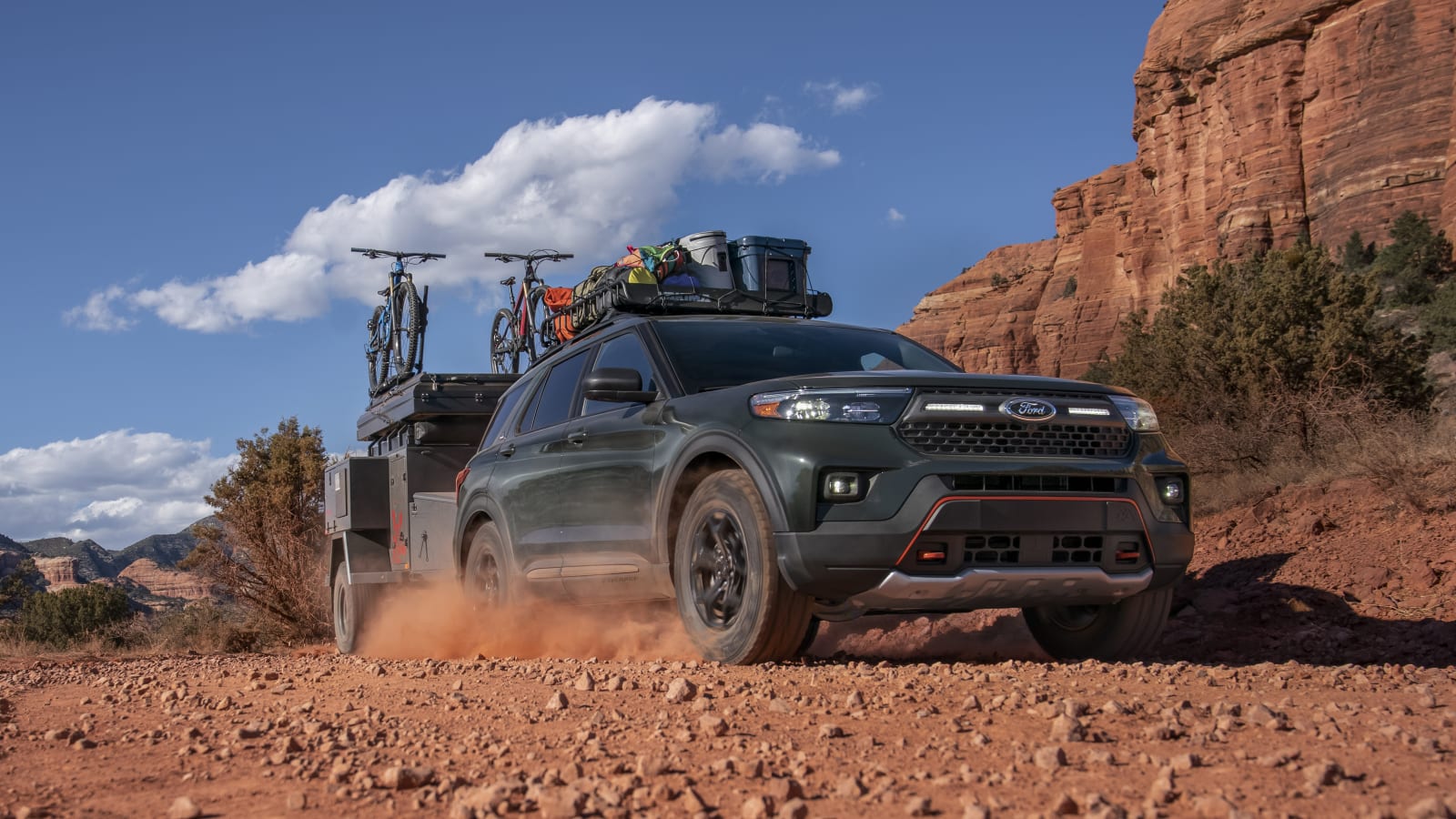
All the while, the Timberline provided what felt like a rather normal and modern driving experience, free from the analog efforts of more dedicated off-roaders. As standard, it comes with Ford Co-Pilot360 Assist+, a driver assist suite including stop-and-go adaptive cruise control, effective lane centering steering assistance, and automatic emergency braking with evasive steering assist. Voice activated touchscreen navigation and FordPass Connect with 4G Wi-Fi hotspot are included, as is proximity, remote start and Ford’s SecuriCode exterior keypad. Our tester also featured the optional twin-panel sunroof ($1,695) to let more light in while keeping the elements out.
After a week of driving, the Timberline had us feeling a little more fondness for the Explorer, finding this version to better encapsulate our vision for what this nameplate should be (and originally was in the good ol’ Eddie Bauer days). It helps round out a nameplate that was in need of some rounding, and we appreciate when something like this can more capably haul three rows of passengers and their cargo to a remote cabin or campsite. It’s still a comfortable and convenient daily driver and family hauler, and while it can’t venture as far into the wilderness as the Bronco, it can get you most of the way there comfortably and in style.
Related video:

